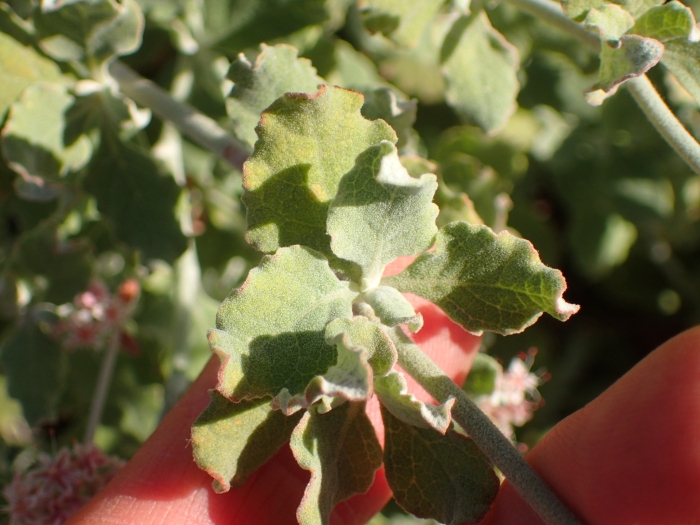Coastal Buckwheat
(Eriogonum cinereum)
Coastal Buckwheat (Eriogonum cinereum)
/
/

George Williams
CC BY 4.0
Image By:
George Williams
Recorded By:
Copyright:
CC BY 4.0
Copyright Notice:
Photo by: George Williams | License Type: CC BY 4.0 | License URL: http://creativecommons.org/licenses/by/4.0/ | Rights Holder: George Williams | Publisher: iNaturalist | Date Created: 2020-12-25T10:04:18-08:00 |



















































Estimated Native Range
Summary
Eriogonum cinereum, commonly known as Coastal Buckwheat or Ashyleaf Buckwheat, is a perennial herb native to the coastal sage scrub and chaparral of California, particularly found in sandy soils and bluffs along the coast. It is a low-growing, spreading shrub reaching 2–4 feet (0.61–1.22 m) in both height and width. The plant is notable for its light silvery gray coloration, a result of the woolly hairs on its stems and foliage. The leaves are distinctive, being wavy-edged ovals one to three centimeters long. From late spring to fall, it produces inflorescences that extend outward, each bearing one to several clusters of tiny, frilly flowers. These flowers range from light whitish-pink to brownish-pink and are quite hairy, adding to the plant’s textured appearance.
Coastal Buckwheat is valued for its drought tolerance and ability to attract pollinators, including butterflies, making it an excellent choice for native plant gardens, wildlife gardens, and larger natural landscaping projects. It thrives in full sun and requires very little water once established, making it an ideal candidate for xeriscaping. This species is adaptable to a range of soil drainage conditions, from fast to slow. While it is generally low-maintenance, it can be susceptible to root rot if overwatered or planted in poorly draining soils.CC BY-SA 4.0
Coastal Buckwheat is valued for its drought tolerance and ability to attract pollinators, including butterflies, making it an excellent choice for native plant gardens, wildlife gardens, and larger natural landscaping projects. It thrives in full sun and requires very little water once established, making it an ideal candidate for xeriscaping. This species is adaptable to a range of soil drainage conditions, from fast to slow. While it is generally low-maintenance, it can be susceptible to root rot if overwatered or planted in poorly draining soils.CC BY-SA 4.0
Plant Description
- Plant Type: Subshrub, Shrub
- Height: 3-3 feet
- Width: 2-3 feet
- Growth Rate: Rapid
- Flower Color: Pink, Brown
- Flowering Season: Fall, Spring, Summer
- Leaf Retention: Evergreen
Growth Requirements
- Sun: Full Sun
- Water: Very Low
- Drainage: Fast, Medium
Common Uses
Bank Stabilization, Bee Garden, Bird Garden, Border Plant, Butterfly Garden, Drought Tolerant, Erosion Control, Groundcover, Low Maintenance, Potted Plant, Rock Garden, Salt Tolerant, Showy Flowers, Street Planting
Natural Habitat
Coastal sage scrub and chaparral of California, particularly in sandy soils and bluffs along the coast
Other Names
Common Names: Ashyleaf Buckwheat
Scientific Names: , Eriogonum cinereum,
GBIF Accepted Name: Eriogonum cinereum Benth.